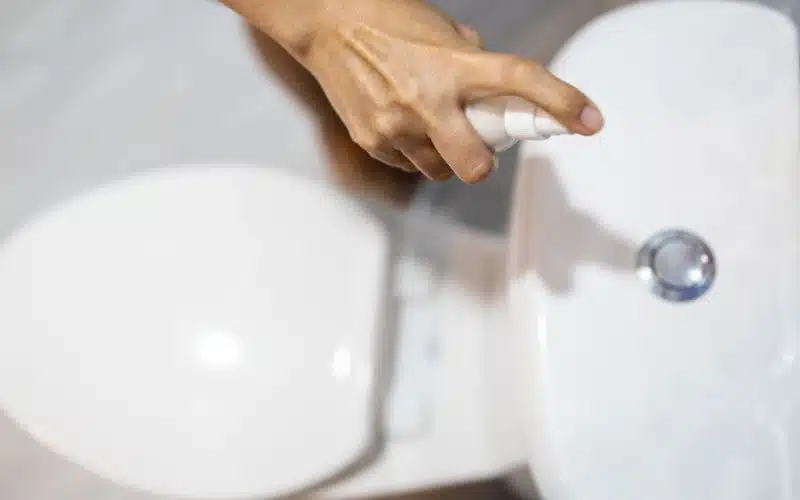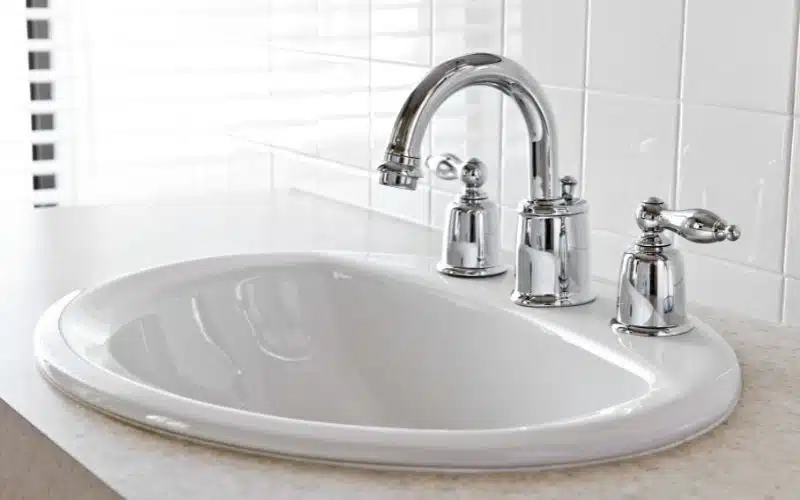A bathroom without a bathtub is incomplete. Adding a safe and functional bathtub in the bathroom is one of the processes you should not take lightly.
Knowing the weight limit of your bathtub is one of the ways to prevent bathroom accidents and other problems.
Bathtub and home damages happen when homeowners do not know the weight limit of their bathtubs.
Bathtubs have a weight limit. Although the weight limits of bathtubs vary, most bathtubs can hold between 350 pounds to 1000 pounds. Every bathtub has its weight limit depending on the material used in making it. Also, the weight limit of bathtubs depends on the floor’s size and thickness.
What Is the Maximum Weight a Bathtub Can Carry?

The maximum weight of a bathtub is 1000pounds. However, the maximum weight a bathtub can carry depends on the material of the bathtub, size, and the support given during installation.
The maximum weight a bathtub can carry is one of the essential things when buying a new bathtub.
The size of a bathtub determines the maximum weight a bathtub can carry. For example, a 30inches wide and 5 feet long bathtub has a maximum capacity of about 1000 pounds.
However, the size of a bathtub is not a significant determinant; the material is. Below are the types of materials used in making bathtubs:
#1. Porcelain Enameled Cast Iron Bathtubs
Porcelain Enameled cast iron bathtubs have enameled cast iron, which is why it is a standard tub. The cast iron material is durable and hard to break because it is a strong material.
Most house owners with heavy weights go for bathtubs made of this material because they can hold the most weight, not regarding the size.
#2. Porcelain Steel Tubs
As opposed cast iron bathtubs, steel tubs have steel shells coated with porcelain enamel to increase their durability.
The enamel coating helps the surfaces of the bathtubs to remain glossy for some time and makes them heat resistant.
However, they are cold at room temperature, unlike acrylic, which is warm at room temperature.
#3. Acrylic Bathtubs
This type of material is common because of its water resistance attribute. Acrylic is a non-porous material, making it highly resistant to water.
It is also solid and durable, which makes it a perfect choice for many. In addition, its non-porosity makes it easy to clean and maintain.
Acrylic bathtubs are from vacuum-formed acrylic sheets. The acrylic sheets are further reinforced with fiberglass to increase their durability.
The material is lightweight and fits into most homes. It is affordable and comes in different colors and sizes. In addition, it retains heat, making it warm when dry, even at room temperature.
#4. Fiberglass Bathtubs
These tubs are very affordable and lightweight. The only downside to this material is that it has low durability. Consistent use can break the material because it is brittle and soft.
How Much Human Weight Can a Bathtub Hold?
A standard bathtub can hold between 350 to 1000 pounds. In addition, most average bathtubs can hold about 500 pounds which is about 220 kg.
The material, style, and size determine the overall capacity of a bathtub. Most of the bathing tubs out there are suitable for various people.
However, for heavy-weight people, it is recommended that they should use walk-in tubs. Walk-in tubs can hold over 300 pounds, making them suitable for people with significant weight.
In addition, heavier people can consider bariatric bathtubs because they can hold over 600 pounds.
Can a Bathtub Break?
A bathtub can break. Bathtub materials comprise acrylic, fiberglass, stone resin, and porcelain enameled steel that can break or crack.
For example, fiberglass can become weaker with consistent use, leading to crack and eventual breakage.
Likewise, physical trauma such as dropping heavy materials on the bathtub causes cracks or breakage.
Heavy objects can leave minor dents or cracks on the tub at the initial stage, leading to total breakage if not fixed or replaced immediately.
Cracks cause water to enter the bathtub inside, which causes the bathtub to weaken over time.
Consistent use of abrasive cleaners can cause the finishing of bathtubs to wash away because of the high concentration of acids in them.
Most people scrub the surface with abrasive materials and potent cleaning agents to ensure the bathtub is clean.
Unfortunately, this opens the material to more moisture and increases the rate at which cracks occur.
The abrasive cleaners include bleach, volcanic ash, silica, and others. Also, materials that are light, flexible, and weak break easily.
An example is fiberglass. Highly porous material tends to retain moisture and weaken over time, making them crack easily.
Likewise, exceeding the weight limit of the material used for your bathtub can lead to a crack.
Sitting and putting heavy objects on the rim also weaken the bathtub because of the weight of the objects.
Lack of proper support is also a significant cause of bathtub breakage. According to the manufacturer’s recommendation, the bathtub should be on a flat surface.
An uneven surface will cause the bathtub to tilt to one side and cause unequal distribution of weight on the bathtub.
When this happens, the part that carries more weight than others become weakened over time, and cracks occur. A good surface is a permanent solution to this problem.
It is important to note that that there is a crack `does not mean the bathtub will break down immediately.
However, it is a sign that the bathtub is getting weaker. Below are the two types of bathtub cracks:
#1. Hairline cracks
Cracks that resemble strands of hair are majorly called hairline cracks. It is due to constantly dropping heavy objects on the bathtub’s surface.
These cracks are not easily repairable. Small cracks all over the bathtub destroy or weaken the strength of the bathtub.
Also, the cracks can spread to other parts of the bathtub and lead to eventual breakage if not repaired. You should use basic repair kits to patch these cracks to prevent further damage.
#2. Stress Cracks
These cracks form due to the dropping of heavy objects on the surfaces of the bathtub. It also happens when a heavy object is on the surface.
These are surface-level cracks, which are not deep, making them easy to fix. You can quickly fix these cracks by patching them with repair kits.
Can a Bath Fall Through the Ceiling?
Although it happens, it is rare for a bath to fall through the ceiling. Most homes have a strong subfloor that will prevent this from happening.
This support system is called wood joints on the subfloor. Below are some of the reasons why a bath can fall through the ceiling:
#1. Aging of the Floor
As the house ages, the floor and subfloor weaken over time. Professionals advise people not to install bathtubs in old homes because of the high level of risk involved.
Cracks and leaks on the floor are signs that the floor is aging. In addition, installing a bathtub on this type of floor can increase the risk of the bathtub falling through the ceiling.
#2. Faulty installation
Improper installation can increase the risk of the bathtub falling through the ceiling. An uneven floor is one of the significant results of poor installation—consequently, the weight of the bathtub is uneven.
As a result, the sides with more weight weaken on time and the risk of causing home accidents increases.
#3. Previously Damaged Floor
A floor with fire, cracks, and other disasters increases the risk of a bathtub falling through the ceiling when installed. Also, it would be best if you did not consider a previously drilled floor.
#4. Overloaded Floor
Most home floors have the maximum load limit they can carry. For example, engineers built the bathroom floor to accommodate about 4000 pounds because of the load it tends to carry.
However, the bathtubs and other fixtures can fall through the ceiling anytime if the floor exceeds its maximum limit.
Below are some of the solutions to these problems:
| Problem | Solution |
|---|---|
| Aging of the floor | Ensure the floor is fixed correctly and reconstructed with durable materials. |
| Overloaded floor | Free up some space to accommodate the weight and size of the bathtub. |
| Faulty installation | proper fixing and reconstruction of the bathtub |
| Previously damaged floor | Reconstruct the floor with durable materials |
How Much Body Weight Can a Fiberglass Tub Hold?
A fiberglass tube can hold up to 54 gallons of water, showing a weight limit of 450 pounds.
Most manufacturers of bathtubs usually give the quantity of water (in gallons) that the capacity of the bathtub can carry because the weight of water is consistent and can give accurate specifications.
Fiberglass is brittle, which means it is a delicate material. It is more prone to cracks than other materials because of its lightweight.
Exceeding the weight limit of this type of material can lead to bathroom disasters. Fiberglass is molded from plastic and shaped into the desired bathtub shape.
Next, the bathtub is coated with a layer of resin to protect it from scratches and the impact of light objects when dropped on it.
Installation of fiberglass is relatively easy because of its flexibility and lightweight. However, it is less durable compared to other bathtub materials.
In addition, it is highly porous, which makes it retain water in its crack, leading to weakened bathtubs.
Conclusion
Installing a bathtub is one of the processes that you should pay attention to avoid home damage. Knowing the weight limit of your bathtub can save you from different problems.
Unfortunately, it is not easy to determine the maximum capacity of a bathtub; however, some factors such as materials, size, and shape can help to know the weight limit of the bathtub.





